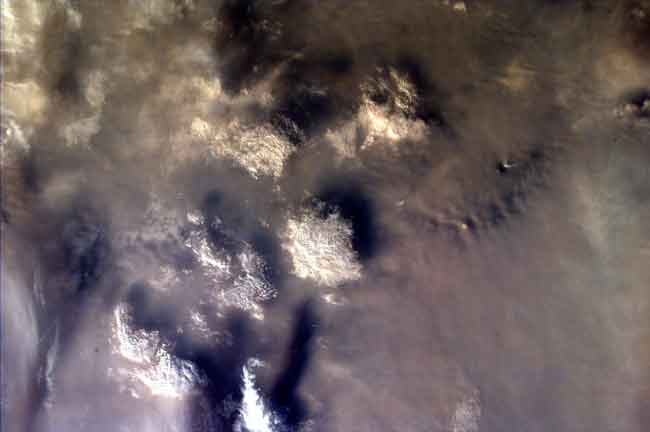Ancient Volcano's Devastating Effects Confirmed

A massive volcanic eruption that occurred in the distant past killed off much of central India's forests and may have pushed humans to the brink of extinction, according to a new study that adds evidence to a controversial topic.
The Toba eruption, which took place on the island of Sumatra in Indonesia about 73,000 years ago, released an estimated 800 cubic kilometers of ash into the atmosphere that blanketed the skies and blocked out sunlight for six years. In the aftermath, global temperatures dropped by as much as 16 degrees centigrade (28 degrees Fahrenheit) and life on Earth plunged deeper into an ice age that lasted around 1,800 years.
In 1998, Stanley Ambrose, an anthropology professor at the University of Illinois, proposed in the Journal of Human Evolution that the effects of the Toba eruption and the Ice Age that followed could explain the apparent bottleneck in human populations that geneticists believe occurred between 50,000 and 100,000 years ago. The lack of genetic diversity among humans alive today suggests that during this time period humans came very close to becoming extinct.
To test his theory, Ambrose and his research team analyzed pollen from a marine core in the Bay of Bengal that had a layer of ash from the Toba eruption. The researchers also compared carbon isotope ratios in fossil soil taken from directly above and below the Toba ash in three locations in central India — some 3,000 miles from the volcano — to pinpoint the type of vegetation that existed at various locations and time periods.
Heavily forested regions leave carbon isotope fingerprints that are distinct from those of grasses or grassy woodlands.
The tests revealed a distinct change in the type of vegetation in India immediately after the Toba eruption. The researchers write in the journal Palaeogeography, Palaeoclimatology, Palaeoecology that their analysis indicates a shift to a "more open vegetation cover and reduced representation of ferns," which grow in humid conditions, all of which "would suggest significantly drier conditions in this region for at least 1,000 years after the Toba eruption."
The dryness probably also indicates a drop in temperature "because when you turn down the temperature you also turn down the rainfall," Ambrose said. "This is unambiguous evidence that Toba caused deforestation in the tropics for a long time."
Get the world’s most fascinating discoveries delivered straight to your inbox.
He also concluded that the disaster may have forced the ancestors of modern humans to adopt new cooperative strategies for survival that eventually permitted them to replace Neanderthals and other archaic human species.
Although humans survived the event, researchers have detected increasing activity underneath a caldera at Yellowstone National Park, where some suspect another supervolcanic eruption will eventually take place. Though not expected to occur anytime soon, a Yellowstone eruption could coat half the United States in a layer of ash up to 3 feet (1 meter) deep.
- Take the Volcano Quiz
- Image Gallery: Wild Volcanoes
- The Science of Volcanoes

